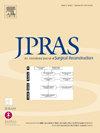Interpersonal impressions of cleft and non-cleft adolescents: A panel assessment study of peers, laypersons, and clinicians using 3dMD images
IF 2
3区 医学
Q2 SURGERY
Journal of Plastic Reconstructive and Aesthetic Surgery
Pub Date : 2024-09-18
DOI:10.1016/j.bjps.2024.09.043
引用次数: 0
Abstract
Background
Patients with cleft lip and palate anomalies suffer from associated negative psychosocial effects despite undergoing reconstructive surgeries. Discrimination from others may be a contributing factor. We aim to understand whether people react differently to cleft and non-cleft subjects in questions regarding aesthetic appraisal and interpersonal impressions, as well as whether diverging opinions exist between people of different backgrounds.
Materials and methods
Using the 3dMD system, three-dimensional craniofacial images of cleft (n = 20) and non-cleft (n = 5) pediatric individuals were obtained and used to create a Likert scale-based questionnaire. Participants from three different backgrounds, including adolescent peers, adult laypersons, and plastic surgeons, were recruited to complete the assessment. The resulting data were transferred to a bar graph and analyzed with the item response theory–graded response model to estimate the latent traits and capability of each subject.
Results
Non-cleft images obtained more positive responses than cleft images in questions of both aesthetic appraisal and interpersonal impressions. However, some of the cleft images were rated similarly, or even superior, to non-cleft images in questions regarding interpersonal impressions. Surgeons showed the greatest latent capability in differentiating between cleft and non-cleft images, followed by adult laypersons, and then adolescent peers.
Conclusions
Despite cleft patients experiencing drastic improvements in appearance post-repair, all subject groups responded differently to questions concerning aesthetic and social impressions of pediatric cleft and non-cleft images. Plastic surgeons were more critical than others. These findings may offer further insight to clinicians, educators, and caregivers into the social challenges faced by cleft individuals.
裂隙和非裂隙青少年的人际印象:使用 3dMD 图像对同龄人、非专业人士和临床医生进行小组评估研究。
背景:唇腭裂畸形患者尽管接受了整形手术,但仍会受到相关的负面社会心理影响。来自他人的歧视可能是一个诱因。我们旨在了解人们对唇腭裂和非唇腭裂受试者在美学评价和人际印象方面的反应是否不同,以及不同背景的人之间是否存在意见分歧:使用 3dMD 系统获取了儿童裂隙(20 人)和非裂隙(5 人)的三维颅面图像,并将其用于制作基于李克特量表的问卷。我们招募了三种不同背景的参与者来完成评估,包括青少年同龄人、成人非专业人士和整形外科医生。所得数据被转换成条形图,并用项目反应理论-分级反应模型进行分析,以估计每个受试者的潜在特质和能力:结果:在美学评价和人际印象的问题上,非裂隙图像比裂隙图像获得了更多的正面回答。然而,在人际印象问题上,一些裂隙图像的评分与非裂隙图像相似,甚至更高。外科医生在区分唇裂和非唇裂图像方面的潜在能力最强,其次是成年非专业人士,然后是青少年同龄人:结论:尽管裂隙患者在修复后外观得到了显著改善,但所有受试者群体在回答有关小儿裂隙和非裂隙图像的美学和社会印象的问题时都表现出了不同的反应。整形外科医生比其他医生更挑剔。这些发现可能会让临床医生、教育工作者和护理人员进一步了解唇裂患者所面临的社会挑战。
本文章由计算机程序翻译,如有差异,请以英文原文为准。
求助全文
约1分钟内获得全文
求助全文
来源期刊
CiteScore
3.10
自引率
11.10%
发文量
578
审稿时长
3.5 months
期刊介绍:
JPRAS An International Journal of Surgical Reconstruction is one of the world''s leading international journals, covering all the reconstructive and aesthetic aspects of plastic surgery.
The journal presents the latest surgical procedures with audit and outcome studies of new and established techniques in plastic surgery including: cleft lip and palate and other heads and neck surgery, hand surgery, lower limb trauma, burns, skin cancer, breast surgery and aesthetic surgery.

 求助内容:
求助内容: 应助结果提醒方式:
应助结果提醒方式:


